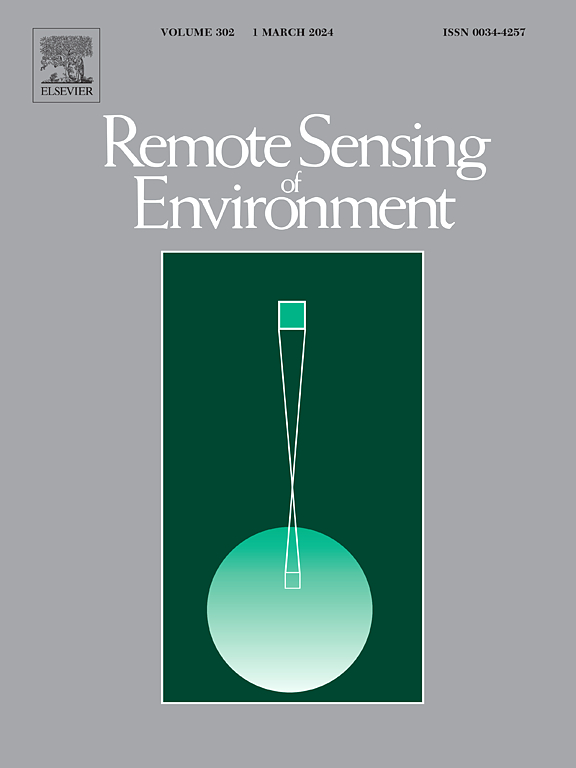估计来自TROPOMI NO2羽流的单个船舶的NOx排放量
IF 11.1
1区 地球科学
Q1 ENVIRONMENTAL SCIENCES
引用次数: 0
摘要
海上运输是人为氮氧化物排放和沿海空气污染的重要来源。国际海事组织(IMO)认识到这一点,近年来逐步实施了更严格的船舶排放标准。然而,监测海上船只的排放带来了固有的挑战,促使人们探索卫星观测作为一种有希望的解决方案。在这里,我们使用TROPOMI对二氧化氮羽流的测量结果,结合船舶位置和身份信息,以及大气模型,量化了2019年地中海东部各艘船舶130羽流的氮氧化物排放。因为大多数排放的氮氧化物都是以NO的形式存在的,它不会立即转化为可检测的NO2,所以在船舶烟囱顺风方向15-30公里处,烟柱显示出其NO2的最大值。由于羽流扩散和光化学氧化,下风NO2进一步减少。背景臭氧和风速在NO2羽流的可探测性以及NOx排放与观测NO2之间的关系中都起着重要作用,这解释了地中海东部夏季臭氧水平较高的良好探测条件。充分考虑排放、扩散、夹带和烟羽化学的影响,我们发现10-317 g (NO2) s−1的排放强度。然后,我们使用AIS系统和船舶特定数据计算检测到的船舶羽流的排放因子,发现较新的二级船舶与较旧的一级船舶相比具有更高的排放因子。当发动机负荷较低时尤其如此,这是我们整体中最常观察到的运行模式。此外,在检测时,二级船舶检测到的排放因子中约有一半高于国际海事组织加权平均限值。提出的方法为海上船舶排放自动化监测奠定了基础,有助于更好地管理空气质量。本文章由计算机程序翻译,如有差异,请以英文原文为准。
Estimating NOx emissions of individual ships from TROPOMI NO2 plumes
Maritime transportation is a substantial contributor to anthropogenic NO emissions and coastal air pollution. Recognizing this, the International Maritime Organization (IMO) has steadily implemented stepwise stricter emission standards for ships in recent years. However, monitoring emissions from sea-bound vessels poses inherent challenges, prompting the exploration of satellite observations as a promising solution. Here we use TROPOMI measurements of NO plumes together with information on ship position and identity, and atmospheric models to quantify the NO emissions of 130 plumes from individual ships in the eastern Mediterranean Sea in 2019. Because most of the emitted NO is in the form of NO, which is not immediately converted into detectable NO, plumes show their NO maximum some 15-30 km downwind of the ship’s stack. Further downwind NO decreases because of plume dispersion and photochemical oxidation. Background ozone and wind speed play a significant role both in detectability of the NO plume and the relationship between NO emissions and observed NO, explaining the good detection conditions in the eastern Mediterranean summertime, where ozone levels are high. Taking such effects of emissions, dispersion, entrainment, and in-plume chemistry in full account, we find emission strengths of 10-317 g (NO) s−1. We then calculate emission factors of the detected ship plumes using AIS and ship specific data and find that newer Tier II ships have higher emission factors compared to older Tier I ships. This is especially the case when running at lower engine loads, which is the most frequently observed mode of operation in our ensemble. Additionally, at the time of detection around half of the emission factors detected for Tier II ships lie above the IMO weighted average limits. The presented method sets the stage for automated ship emission monitoring at sea, contributing to better air quality management.
求助全文
通过发布文献求助,成功后即可免费获取论文全文。
去求助
来源期刊

Remote Sensing of Environment
环境科学-成像科学与照相技术
CiteScore
25.10
自引率
8.90%
发文量
455
审稿时长
53 days
期刊介绍:
Remote Sensing of Environment (RSE) serves the Earth observation community by disseminating results on the theory, science, applications, and technology that contribute to advancing the field of remote sensing. With a thoroughly interdisciplinary approach, RSE encompasses terrestrial, oceanic, and atmospheric sensing.
The journal emphasizes biophysical and quantitative approaches to remote sensing at local to global scales, covering a diverse range of applications and techniques.
RSE serves as a vital platform for the exchange of knowledge and advancements in the dynamic field of remote sensing.
 求助内容:
求助内容: 应助结果提醒方式:
应助结果提醒方式:


